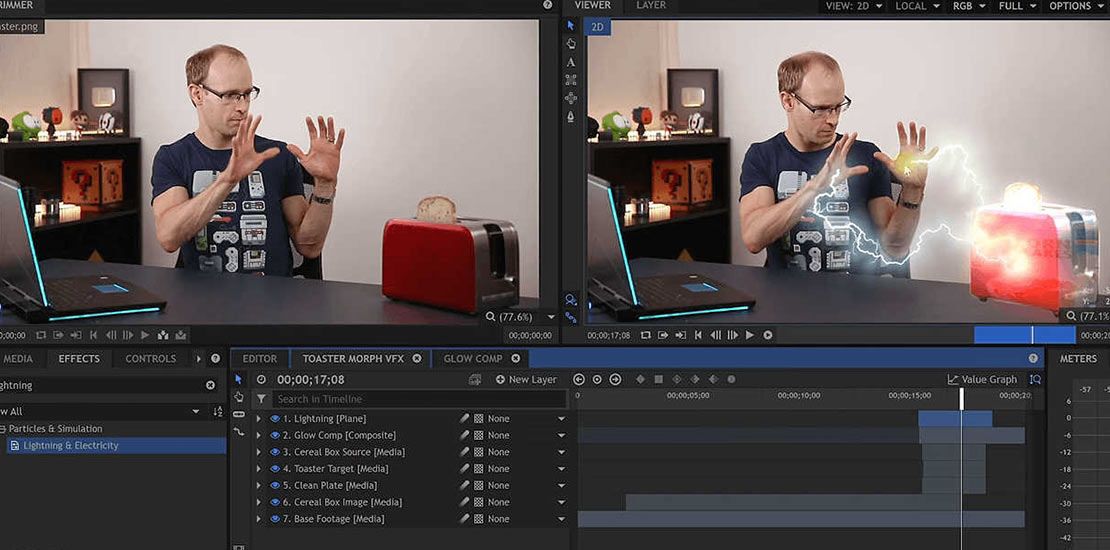Visual Effects: A Guide to VFX Courses and the Best Institute
Table of Contents
# Learning Objectives of Visual Effects Course:
# Importance of Visual Effects Course in Film and Television Industry:
# Different Types of Visual Effects Covered in the Course:
# Software and Tools Used in Visual Effects Course:
# Techniques and Skills Taught in Visual Effects Course:
# Course Structure and Curriculum of Visual Effects Course:
# Career Prospects After Completing Visual Effects Course:
Visual Effects or VFX is a specialized field of study that encompasses the manipulation of digital images, animation, and other graphic elements in order to create illusions and enhance the overall visual experience. A Visual Effects course is designed to equip students with the knowledge and technical skills required to produce high-quality visual effects for films, television shows, advertisements, and video games. You can search for “vfx course near me”.
It is an exciting and rapidly-evolving field that offers numerous career opportunities for those with a passion for visual storytelling and creative problem-solving. In this blog we will cover the comprehensive view of vfx courses and the best vfx institute.
Learning Objectives of Visual Effects Course:
The primary learning objectives of a Visual Effects course are as follows:
- To provide students with a comprehensive understanding of the principles of digital imaging, animation, and visual effects.
- To teach students how to use various software and tools to create and manipulate digital images, graphics, and animations.
- To develop students’ skills in compositing, motion graphics, 3D modeling, texturing, lighting, and rendering.
- To encourage students to think creatively and critically while solving visual effects-related problems.
- To prepare students for successful careers in the film, television, advertising, and gaming industries.
Importance of Visual Effects Course in Film and Television Industry:
Visual effects have become an integral part of the film and television industry, playing a significant role in enhancing the storytelling experience for audiences. As such, there is a growing demand for skilled professionals who can create high-quality visual effects that are both realistic and visually appealing. A Visual Effects course can provide students with the necessary skills and knowledge to meet this demand and secure a successful career in the industry.
Different Types of Visual Effects Covered in the Course:
A Visual Effects course covers a wide range of visual effects techniques and types, including:
- Compositing
- Motion graphics
- 3D modeling
- Texturing
- Lighting
- Rendering
- Special effects
- Matte painting
- Virtual reality
- Augmented reality
Software and Tools Used in Visual Effects Course:
A Visual Effects course uses a variety of software and tools to teach students how to create and manipulate digital images, graphics, and animations. Some of the commonly used software and tools in Visual Effects courses include:
- Adobe Photoshop
- Adobe After Effects
- Autodesk Maya
- Nuke
- Cinema 4D
- ZBrush
- Houdini
- Unreal Engine
- Unity
- Blender
Techniques and Skills Taught in Visual Effects Course:
A Visual Effects course teaches students a variety of techniques and skills, including:
- Conceptualization and ideation
- Digital painting and drawing
- Camera tracking and match-moving
- Rotoscoping and keying
- Compositing and visual effects integration
- Motion graphics and typography
- 3D modeling, texturing, and lighting
- Rendering and compositing
- Virtual and augmented reality
- Project management and collaboration
Course Structure and Curriculum of Visual Effects Course:
The structure and curriculum of a Visual Effects course can vary depending on the institution and program. However, a typical Visual Effects course may include the following modules:
- Fundamentals of Digital Imaging and Animation
- Compositing and Motion Graphics
- 3D Modeling and Texturing
- Lighting and Rendering
- Special Effects and Visual Effects Integration
- Virtual and Augmented Reality
- Project Management and Collaboration
- Industry Internship and Capstone Project
Career Prospects After Completing Visual Effects Course:
A Visual Effects course can open up numerous career opportunities in the film, television, advertising, and gaming industries. Some of the popular career options for individuals who complete a Visual Effects course include:
- Visual Effects Artist
- Compositor
- 3D Modeler
- Motion Graphics Designer
- Texture Artist
- Lighting Artist
- VFX Supervisor
- VR/AR Designer
- Game Developer
- Film and Television Director
Which is the best vfx institute ?
If you are searching for a vfx institute near me then George Animatrix is the best option for you. George Animatrix is a reputable institution that offers a VFX course with a focus on providing practical and industry-relevant training to its students.
The VFX course at George Animatrix school of Animation is designed to provide students with hands-on, project-based learning experiences that simulate real-world scenarios. This approach helps students to develop their skills and gain practical experience that can be applied in their future careers.
Conclusion
Visual Effects course can be a great investment for individuals who are passionate about digital imaging and animation and want to pursue a career in the film, television, advertising, or gaming industries. By gaining the necessary skills, knowledge, and experience through a Visual Effects course, individuals can unlock a world of exciting career opportunities and contribute to the creation of captivating and visually stunning content.


